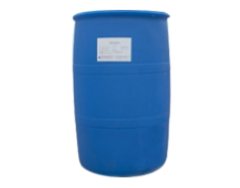Biosurfactant is the secondary metabolite of microorganisms. It has amphiphilic molecular structure which is both lipophilic and hydrophilic. It has the characteristics of dispersion, solubilization, wetting and penetration, and can reduce the interfacial tension and surface tension. Compared with synthetic surfactants, biosurfactants have better biodegradability, biological adaptability and environmental friendliness.

Most biosurfactants are anionic and neutral, most hydrophobic groups are unsaturated or hydroxyl substituted fatty acids, and hydrophilic groups are composed of monosaccharides, disaccharides, polysaccharides, carboxylic acids, amino acids and so on. Their critical micelle concentration is generally between 1 ~ 200mg / L and their molecular weight is 500 ~ 1500amu.
Biosurfactant has amphiphilic structure. It can change the affinity between microbial cells and organic matter by adjusting the hydrophobic characteristics of cell surface, so as to promote the dispersion and absorption of insoluble organic matter in soil. Biosurfactant has been proved to enhance the removal efficiency of hydrocarbons in soil. It can effectively reduce the interfacial tension between insoluble organic matter and water in soil.
In soil remediation, water solubility is an important factor affecting pollutant removal. Many pollutants are highly hydrophobic substances. Generally, water washing remediation is slow and inefficient. In recent years, people have added various additives to enhance the remediation effect. These additives can shorten the time and improve the pollutant removal rate. The additives must be low toxic and biodegradable. Biosurfactant is a very useful additive, It contains hydrophobic groups and hydrophilic groups, which can promote the dispersion and solubilization of pollutants on soil particles. It also has the advantage of no or small environmental impact and the possibility of in-situ growth. Biosurfactants are gradually replacing synthetic surfactants and becoming the mainstream of bioremediation research. Many literatures at home and abroad reported the application of biosurfactants in soil remediation.